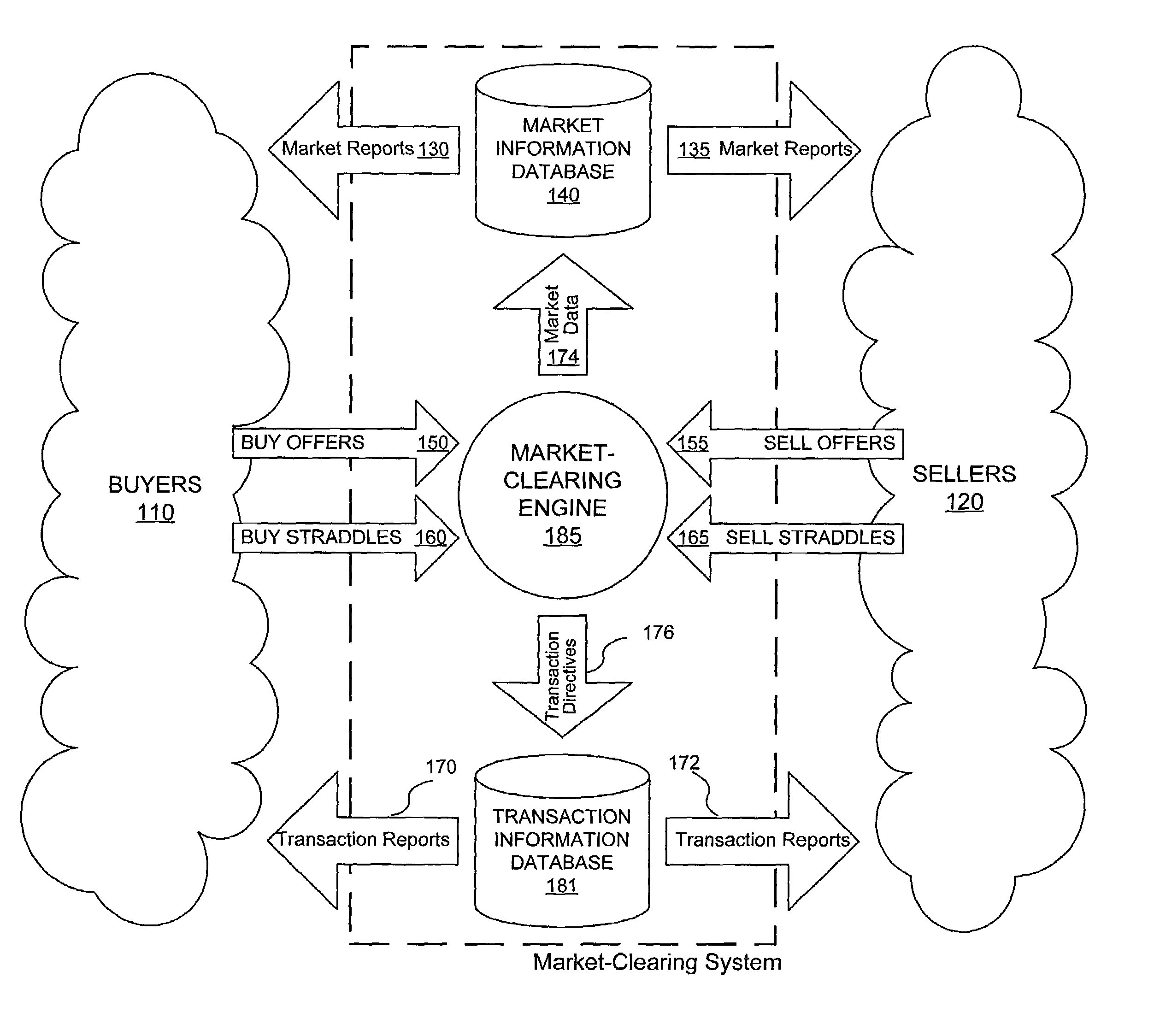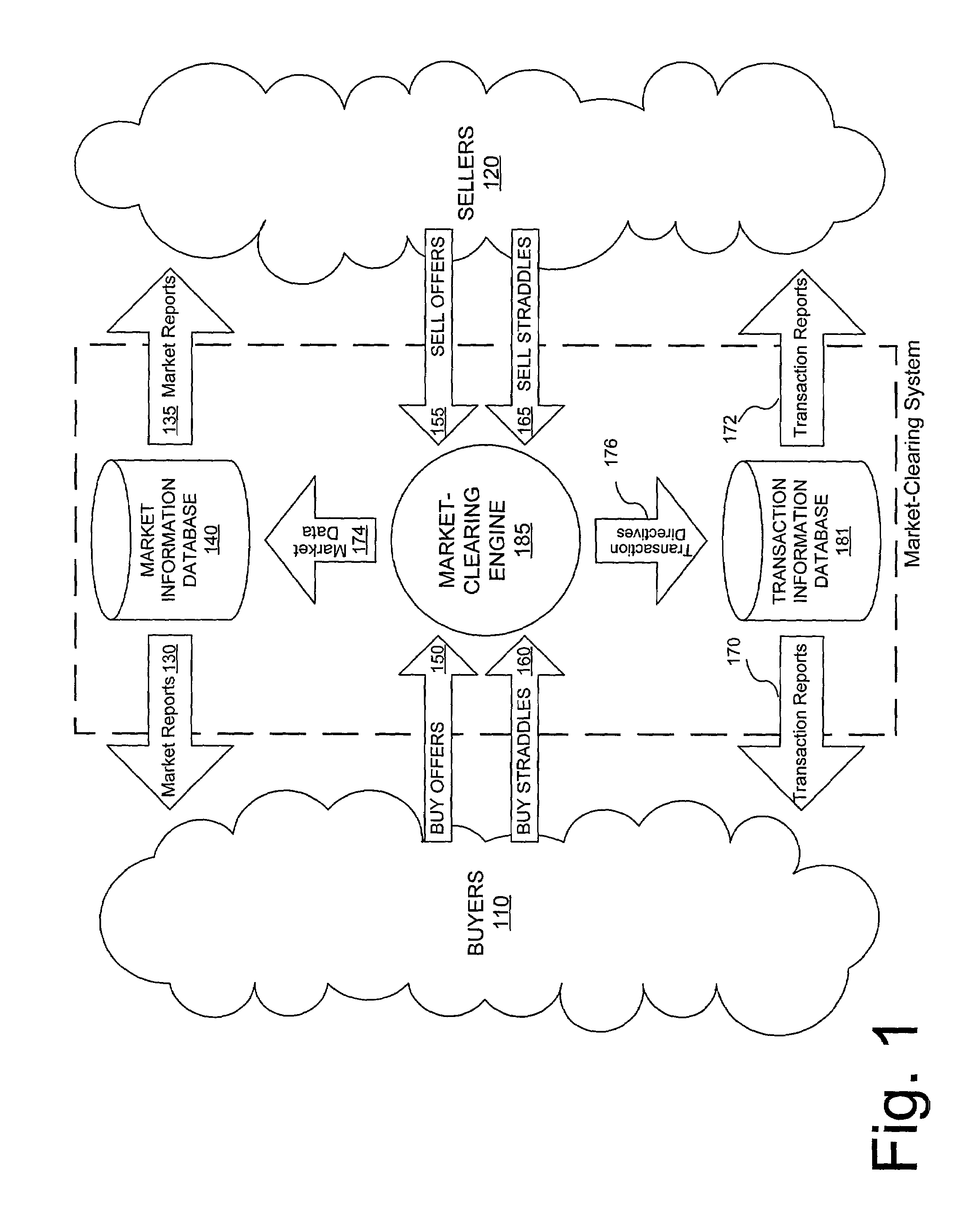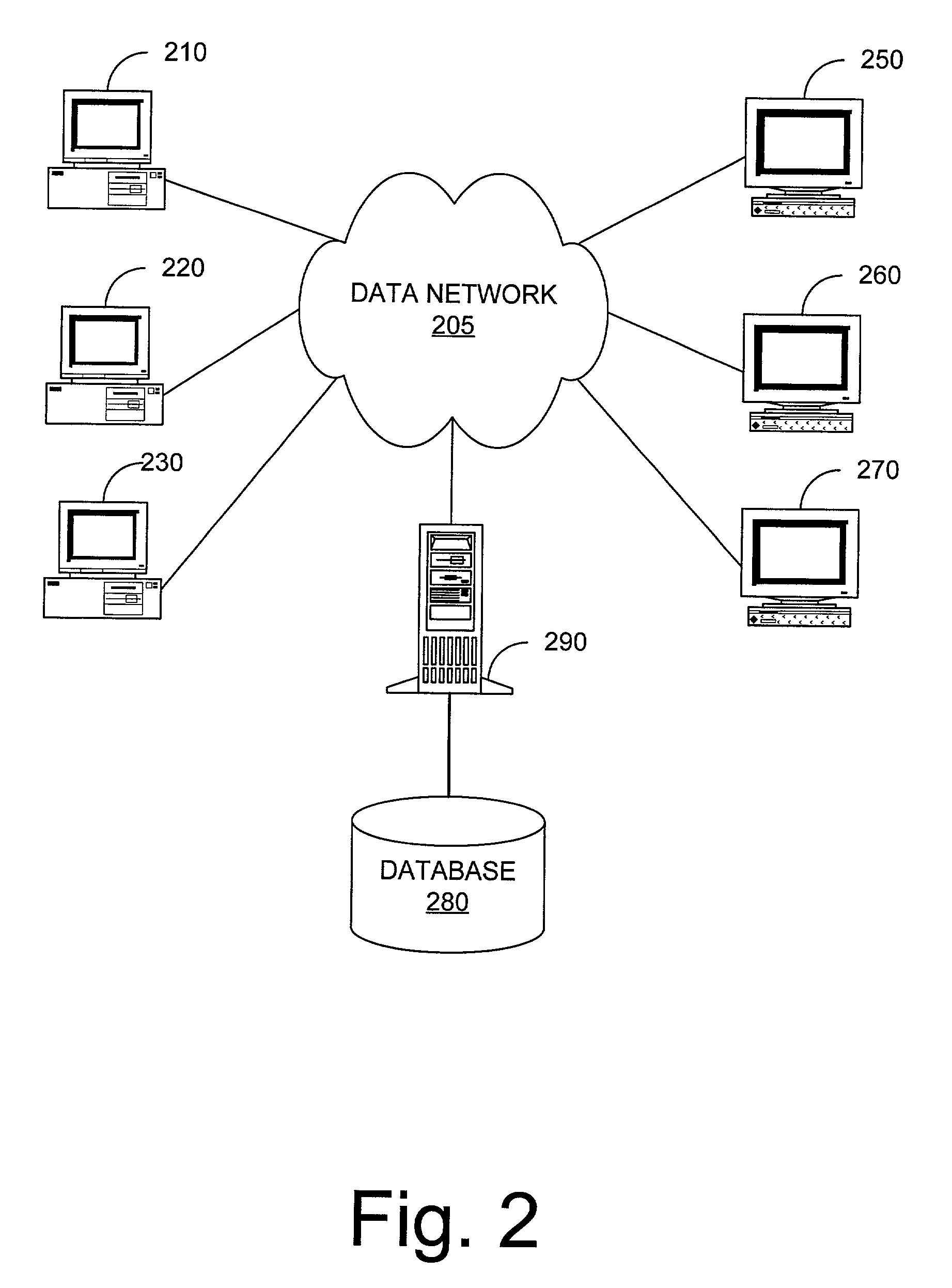Methods and systems for market clearance
a technology of electronic commerce and market clearance, applied in the field of electronic commerce over a network, can solve the problems of not having a mechanism in traditional single-seller auctions to automatically consolidate demand, no assurance that the posted price is competitive, and no priceline to consolidate demand
- Summary
- Abstract
- Description
- Claims
- Application Information
AI Technical Summary
Benefits of technology
Problems solved by technology
Method used
Image
Examples
embodiment
EXEMPLARY MIN-MAX-QUANTITY EMBODIMENT
[0202]Corresponding to each locked, do-not-relock, and potential-lock fragment is an opposite offer fragment with the same quantity. In order to implement minimum-quantity locking, one must first provide a method for recognizing when a minimum quantity constraint can be met by combining the quantities of more than one other opposite offer. Once one can recognize that a minimum quantity is available, then any of a variety of methods can be used to implement a locking policy for dealing with the problem of a later and more-favorably-priced disadvantaged offer locking some units and in the process unlocking enough units from a less-favorably-priced disadvantaged offer to fall below the less-favorably-priced disadvantaged offer's minimum quantity specification while still leaving some units locked at the quantity price, thus violating the pricing specification. Approaches one through four discussed above are examples of locking policies that could be...
PUM
 Login to View More
Login to View More Abstract
Description
Claims
Application Information
 Login to View More
Login to View More - R&D
- Intellectual Property
- Life Sciences
- Materials
- Tech Scout
- Unparalleled Data Quality
- Higher Quality Content
- 60% Fewer Hallucinations
Browse by: Latest US Patents, China's latest patents, Technical Efficacy Thesaurus, Application Domain, Technology Topic, Popular Technical Reports.
© 2025 PatSnap. All rights reserved.Legal|Privacy policy|Modern Slavery Act Transparency Statement|Sitemap|About US| Contact US: help@patsnap.com



